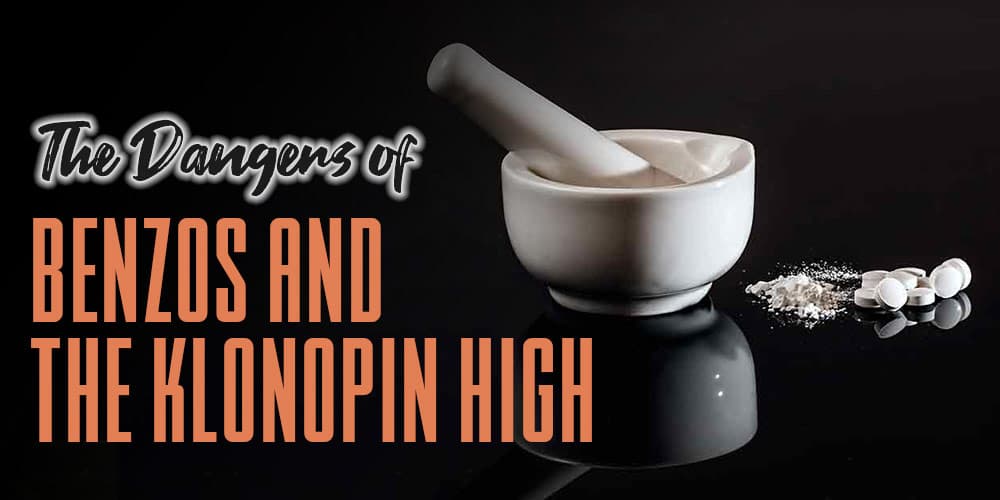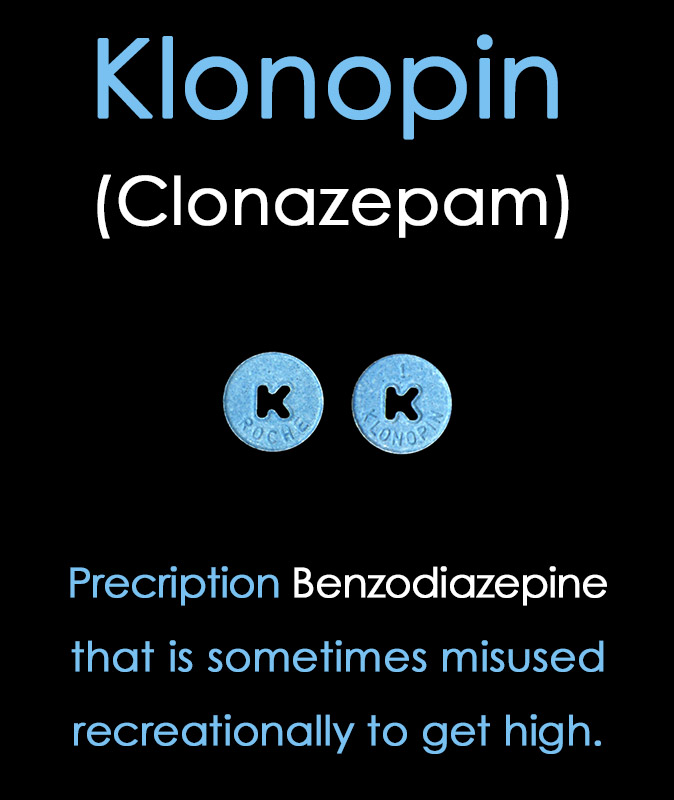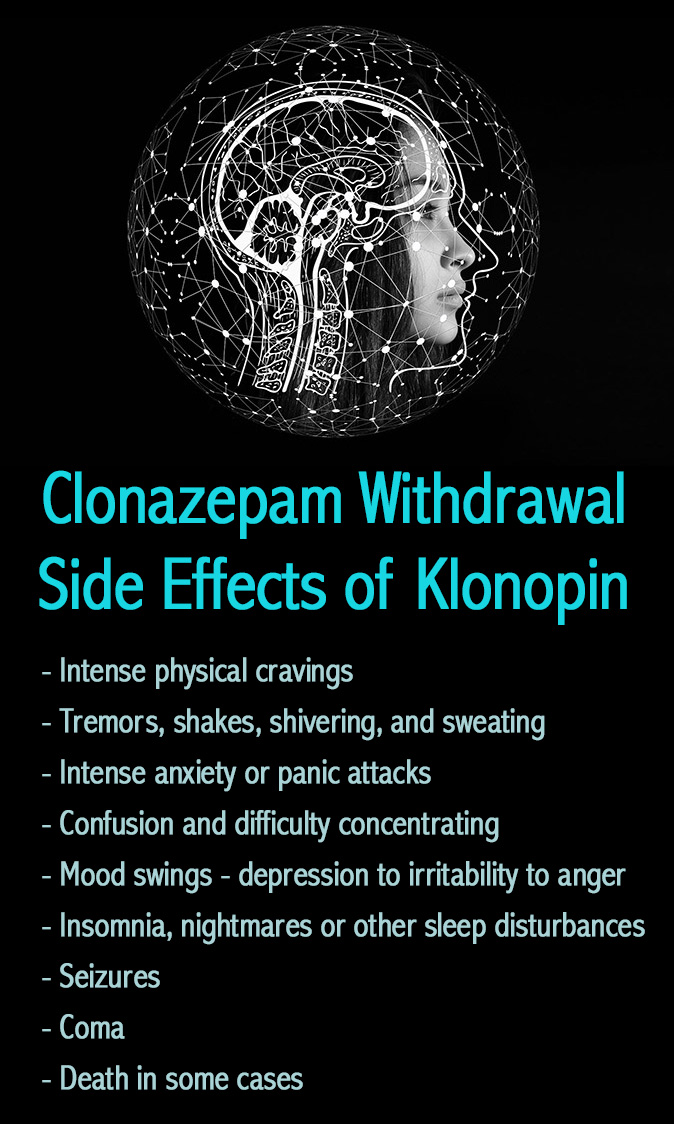
Is getting high on Klonopin or abusing other benzodiazpeines a big problem?
The opioid epidemic, driven primarily by highly addictive prescription painkillers, takes up most of the drug-related media coverage. However, benzodiazepines like Xanax, Valium and especially Klonopin, are extremely addictive sedatives. They are also widely prescribed and potentially lethal when misused or abused.
The New England Journal of Medicine estimates the number of people using benzodiazepines like Klonopin increased from 8 million to 14 million between 1996 and 2013. Additionally, these statistics do not include the illicit market for Klonopin or its generic form.
Benzodiazepines, sometimes referred to as “Benzos,” are an incredibly dangerous class of drugs, and the National Institutes of Health (NIH) reports that 30 percent of all opioid overdoses also involve a substance like Klonopin.
What is Klonopin (Clonazepam)?
Klonopin is actually the brand name of the generic drug Clonazepam. This medication is commonly used as an anti-epileptic prescribed to treat seizures.
Because it is a central nervous system suppressant that slows brain activity by promoting the production of the neurotransmitter GABA, it’s also approved to treat panic disorders and anxiety.
Due to the drug’s effects on the mind and body, Klonopin and other benzos are sometimes used as off-label prescription medications for sleeping disorders and alcohol withdrawal, according to the National Alliance on Mental Illness (NAMI).
Klonopin is quite effective in treating seizure disorders and epilepsy, which are caused by rapid firing neurons in the brain. Increasing the amount of GABA in the brain helps slow these neurons down.
GABA is known to produce a tranquilizing effect, which, as noted above, is why people with anxiety or panic disorders also benefit from using it.
Related: 6 Ways to Increase GABA Naturally For Anxiety Without Benzos

Klonopin and Clonazepam tends to stay in the system longer than other types of benzodiazepines, taking about four hours for the body to process it. Depending on a person’s dosage, or in the case of abusing Klonopin, people may feel the effects linger for up to 12 hours.
Long-term Klonopin use when prescribed by physician, or especially when misused or abused, will result in a tolerance to the drug’s effects. This means a person will need to take more of it to experience the benefits or to achieve a “Klonopin high.”
This tolerance can occur very quickly and develop into dependency, followed by addiction. If this happens, it could result in severe physical and mental health issues.
Why Do People Use Klonopin to Get High?
The effects of clonazepam on the central nervous system slows the mind and body down, leading to feelings of calm or relaxation. If misused by taking more than the prescribed dosage, these effects are intensified and can be similar to being drunk or stoned on marijuana.
People abusing Klonopin to get high recreationally may be taking the drug for any number of reasons, claiming that it just makes them feel good. In fact, though, clonazepam is not typically a “club” or party drug because it’s so sedating.
It may be that some people are self-medicating symptoms of undiagnosed depression, anxiety, post-traumatic stress disorder, or other mental health issues.
Whatever the case might be, this is incredibly risky behavior because Klonopin is so habit forming, which increases the likelihood of dependency and addiction.
Clonazepam is particularly deadly when mixed with alcohol because both substances are central nervous system suppressants. Since the central nervous system controls things like heart rate and breathing, combining the two drugs can quickly lead to an overdose, severe confusion, coma, or even death.
Clonazepam Side Effects
Clonazepam can come with a number of unwanted side effects. If a person is abusing the drug either on its own or with other drugs, these issues are likely to become worse and might lead to permanent damage.
Clonazepam side effects include some of the following:
- Facial swelling around the eyes, mouth, lips and tongue
- Intense fatigue
- Trouble concentrating
- Vomiting or stomach pain
- Muscle aches
- Blood in the urine or stool
- Vision issues, such as tunnel, blurred, or double vision
- Decreased appetite and even loss of taste
- Loss of sexual function and desire
- Increased anxiety
- Depression or suicidal thoughts
- Addiction
Some of these side effects may require immediate medical attention, especially if a person is showing signs of an overdose. It should also be noted that once Klonopin addiction takes hold, withdrawal from benzodiazepines is particularly painful and a big reason people continue to use the drug.

Klonopin Withdrawal
Stopping Benzos “cold turkey” is not recommended. Once the body and brain are physically addicted to Klonopin, quitting the drug will create serious and, depending on the amount of drug used and for the length of time, agonizing withdrawal symptoms.
Unlike opioids or other drugs, quitting many types of benzos all at once, or experiencing severe withdrawal symptoms can be fatal.
Withdrawal side effects from Klonopin include some of the following:
- Intense physical cravings
- Tremors, shakes, shivering, and intense sweating
- Intense anxiety or panic attacks because GABA levels decrease and neurons in the brain start firing more rapidly
- Confusion and difficulty concentrating or focusing
- Mood swings from depression to irritability and anger
- Insomnia, nightmares or other sleep disturbances
- Seizures
- Coma
- Death in some cases
Acute withdrawal from Klonopin (when withdrawal symptoms are at their worst) can last from five days to two weeks. However, unpleasant post-acute withdrawal symptoms may last from two weeks to six months.
Klonopin Addiction Treatment
Drug addiction treatment for Klonopin is recommended for people with a benzodiazepine use disorder.
Because benzodiazepines can be so dangerous, withdrawal in a medically monitored situation is sometimes required. Patients may receive medication that eases withdrawal symptoms during detox, but it’s important that staff be able to intervene if more serious withdrawal symptoms, like seizure and coma, start to occur.
Recovery from Klonopin addiction is possible, though it can be difficult based on a person’s individual history. While in treatment, counselors will help patients explore the underlying issues of their addiction. Group therapy can offer the understanding that a person is not struggling alone.
There are a number of evidence-based therapies that work well, such as Cognitive Behavioral Therapy (CBT) or Dialectical Behavior Therapy (DBT) for managing addiction triggers and behaviors.
The Ashton Method is highly recommended as the safest and most effective method for benzodiazepine withdrawal treatment.
The goal during treatment is creating a long lasting, productive, and happy recovery from addiction.
Using benzos like Klonopin to get high or recreationally is never a good idea. These are powerful drugs that should only be used as prescribed by a doctor. When they are misused, they can lead to addiction or other physical and mental health issues.
Related Posts
- 46 Movies About Drugs, Addiction and Alcoholism
Movies about drugs, addiction and alcoholism can be hard-hitting and even triggering for some people.…
- Signs Of Addiction To Watch For
Addiction is a serious disease and it is imperative for it to be regarded as…
- 9 Celebrities Who Overcame Their Heroin Drug Addiction
In the past, many famous people have kept quiet about their addictions. Thanks to the…
